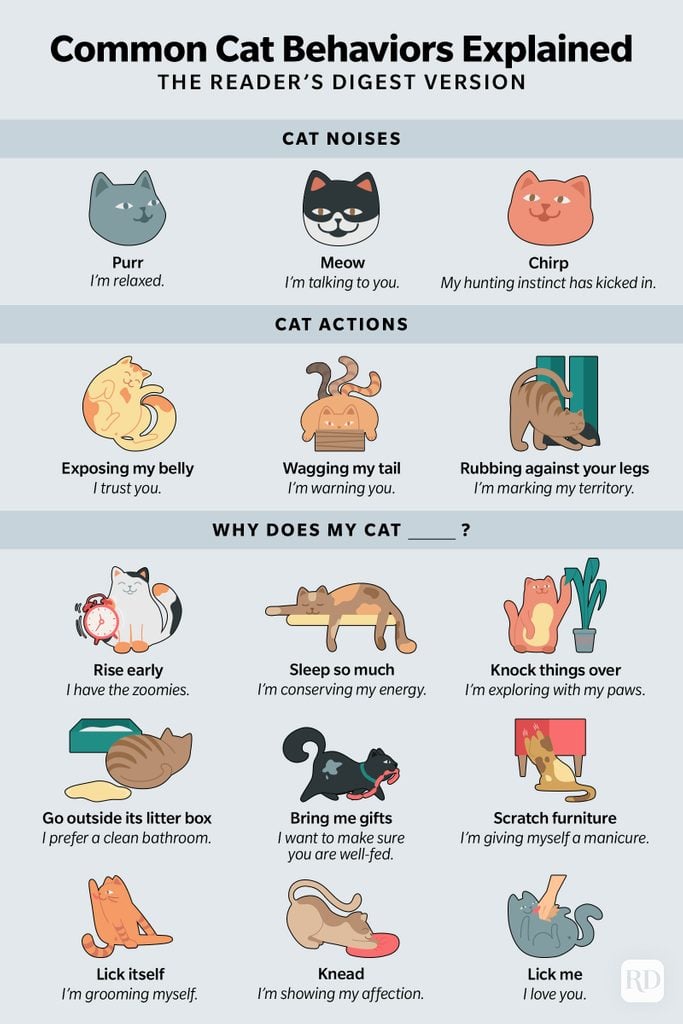As a cat owner, there is no denying the unique and mysterious charm that our feline companions possess. From their graceful movements to their enigmatic purrs, everything about them captivates us. But have you ever wondered what goes on inside that little furry head? Why do they exhibit certain behaviors that seem so perplexing to us humans? In this blog post, we will delve into the fascinating world of a cat’s behavior, unveiling the secrets behind their actions and helping you gain a deeper understanding of your furry friend.

One of the most common behaviors exhibited by cats is kneading. You know, when they rhythmically push their paws against a soft surface, like a blanket or your lap. Many of us have experienced the joy of a kneading cat, but why do they do it? Kneading is a behavior that cats develop as kittens when nursing from their mothers. By kneading, they stimulate milk flow and create a soothing sensation. So when your cat kneads on your lap, they might be trying to recreate that sense of comfort and security from their early days.
Another behavior that can seem baffling is their penchant for knocking things off tables and shelves. It can be frustrating, especially if they break something of value. But rest assured, your cat is not trying to be malicious. Cats are naturally curious creatures, and knocking objects off surfaces is their way of exploring their environment. They have a strong prey drive and enjoy the thrill of seeing objects move and fall. It’s like a mini hunting experience for them! To prevent this behavior, make sure to provide your cat with plenty of toys and interactive playtime to keep them mentally stimulated.
Ever noticed how your cat tends to bring you “gifts” in the form of dead animals or insects? While it may not be the most pleasant surprise, this behavior actually stems from their instinctive hunting behavior. Cats, being natural predators, have a strong hunting drive even if they’re well-fed. When they bring you their “prey,” it’s a sign that they consider you part of their family and are sharing their hunting success with you. It’s their way of showing love and appreciation, strange as it may seem to us humans.
What about that mesmerizing ritual of cat grooming? It’s an activity that seems to engulf them for hours on end. Grooming is not just about hygiene for cats; it serves multiple functions. Cats groom themselves not only to keep their fur clean and smooth but also to regulate body temperature and reduce stress. By grooming, they distribute natural oils on their fur, which helps to waterproof it and keep them warm. Additionally, grooming releases endorphins, promoting a sense of relaxation and well-being. So the next time you see your cat engrossed in their self-care routine, know that it’s their way of taking care of themselves and finding comfort.
Have you ever wondered why cats purr? It’s an enigmatic sound that can bring a sense of tranquility to our lives. While purring is often associated with contentment, cats also purr in other situations, such as when they are in pain or when they’re anxious. Purring is a multi-purpose communication tool for cats, and it’s best to interpret it in context with their overall behavior. It’s their way of expressing a wide range of emotions, from pleasure to distress.
Now let’s talk about that infamous behavior of scratching. It can be frustrating when our furry counterparts shred our furniture, but scratching is a natural and necessary behavior for cats. Cats scratch to remove the outer layer of their claws, mark their territory with scent glands located in their paws, stretch their muscles, and overall maintain their physical and mental well-being. To redirect their scratching behavior, it’s essential to provide them with suitable scratching surfaces, like a scratching post or a cardboard scratcher. Regular nail trimming can also help.
One behavior that often puzzles cat owners is their preference for boxes. You buy them a fancy bed, but where do they choose to sleep? In a cardboard box, of course! Cats love boxes because they provide a sense of security and serve as hiding spots. Boxes provide them with a confined space where they can observe their surroundings while feeling protected from potential threats. It’s their instinctual nature to seek out small, enclosed spaces, reminiscent of their days in the wild when they needed to be cautious of predators.
Lastly, let’s address a common question: why do cats suddenly zoom around the house at lightning speed? Often referred to as “zoomies,” this burst of energy is a natural behavior for cats. It’s their way of releasing pent-up energy, stress, or boredom. Zoomies usually occur when cats have been inactive for a while or after they’ve used the litter box, signaling the need to burn off some steam. So when you witness your cat racing around like a maniac, embrace the chaos and let them indulge in their momentary burst of wildness.
Understanding our furry friends’ behavior is a never-ending journey, as cats continue to surprise and delight us every day. By gaining insights into their instincts and motivations, we can better provide for their needs and build a stronger bond with them. So the next time your cat does something seemingly strange, remember that it’s just their unique way of navigating the world around them. Embrace the quirks, marvel at their mysteriousness, and cherish the special moments you share with your feline companion. After all, life with a cat is always an adventure.

